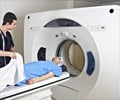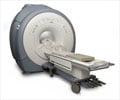Researchers at the Department of Energy's Lawrence Berkeley National Laboratory and the University of California at Berkeley have developed a potential new magnetic resonance imaging
A new magnetic resonance imaging (MRI), which is thought to be faster and more sensitive than existing machines has been developed by researchers at the Department of Energy's Lawrence Berkeley National Laboratory and the University of California at Berkeley.
The researchers call their invention Hyper-CEST (hyperpolarized xenon chemical-exchange saturation transfer).They say that the key to their new technique is "temperature-controlled molecular depolarisation gates', which is closely related field of nuclear magnetic resonance (NMR) that yields a spectrum of molecular information rather than an image.
"The new method holds the promise of combining a set of proven NMR tools for the first time into a practical, supersensitive diagnostic system for imaging the distribution of specific molecules on such targets as tumours in human subjects, or even on individual cancer cells," says Leif Schroder of Berkeley Lab's Materials Sciences Division.
The researchers say that the ability achieve high-contrast images, multiplexed to identify a range of molecular targets, and to do so in a short time, offers many benefits to patients and physicians.
"Doctors attempting to characterize tumours very often have to take biopsies, and that's painful for the patient, so they usually prefer to take only one biopsy," says Schroder.
"But then they have to run all their tests on this very little tissue. So they would be happy with a method where you have a toolbox of sensors, you throw them all in and wait to let them bind, and then do your tests at the different frequencies and you see what sensors are present, detecting the different proteins," the researcher adds.
Advertisement
The research group says that the new technique also offers a better way to study chemical exchange in nanostructures like zeolites, which are important in catalysis, or in versatile carbon nanotubes.
Advertisement
Source-ANI
RAS/L








